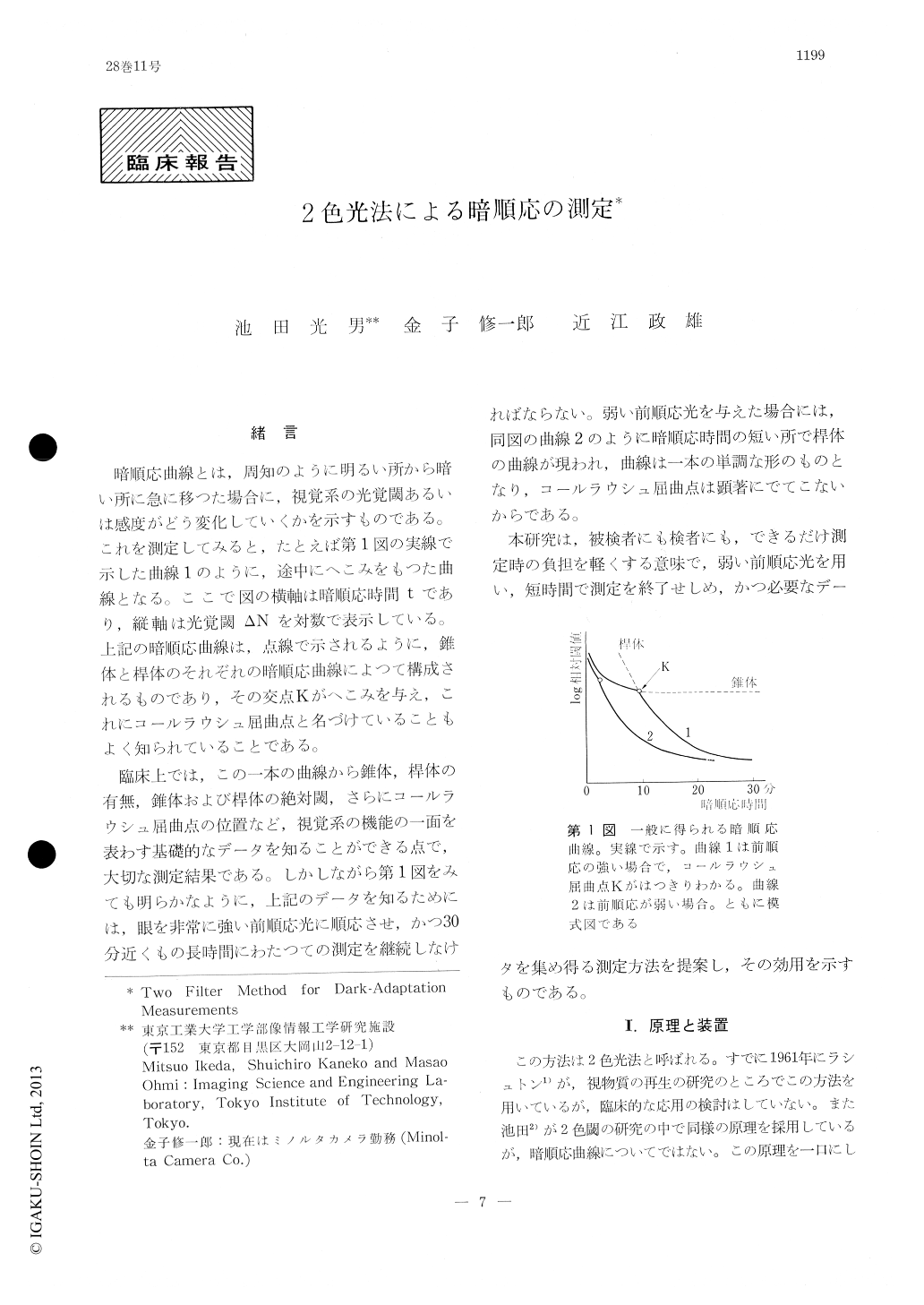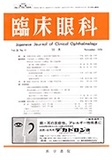Japanese
English
- 有料閲覧
- Abstract 文献概要
- 1ページ目 Look Inside
緒言
暗順応曲線とは,周知のように明るい所から暗い所に急に移つた場合に,視覚系の光覚閾あるいは感度がどう変化していくかを示すものである。これを測定してみると,たとえば第1図の実線で示した曲線1のように,途中にへこみをもつた曲線となる。ここで図の横軸は暗順応時間tであり,縦軸は光覚閾△Nを対数で表示している。上記の暗順応曲線は,点線で示されるように,錐体と桿体のそれぞれの暗順応曲線によつて構成されるものであり,その交点Kがへこみを与え,これにコールラウシュ屈曲点と名づけていることもよく知られていることである。
臨床上では,この一本の曲線から錐体,桿体の有無,錐体および桿体の絶対閾,さらにコールラウシュ屈曲点の位置など,視覚系の機能の一面を表わす基礎的なデータを知ることができる点で,大切な測定結果である。しかしながら第1図をみても明らかなように,上記のデータを知るためには,眼を非常に強い前順応光に順応させ,かつ30分近くもの長時間にわたつての測定を継続しなければならない。弱い前順応光を与えた場合には,同図の曲線2のように暗順応時間の短い所で桿体の曲線が現われ,曲線は一本の単調な形のものとなり,コールラウシュ屈曲点は顕著にでてこないからである。
Measurement of dark-adaptation curve nor-mally takes about half an hour to complete if one requires certain values necessary for clinics, such as the absolute thresholds for cones and rods, the transition point from cones to rods. To shorten the time we introduced the two filter method in which color filters of 560 nm and 510 nm were alternately inserted in the test flash. This provided different curve traces for cone-curve and rod-curve, and we could earsily find out the transition point from cones to rods, although the whole curve did not ne-cessarily show a clear dip called the Kohlrausch defelection point.

Copyright © 1974, Igaku-Shoin Ltd. All rights reserved.


